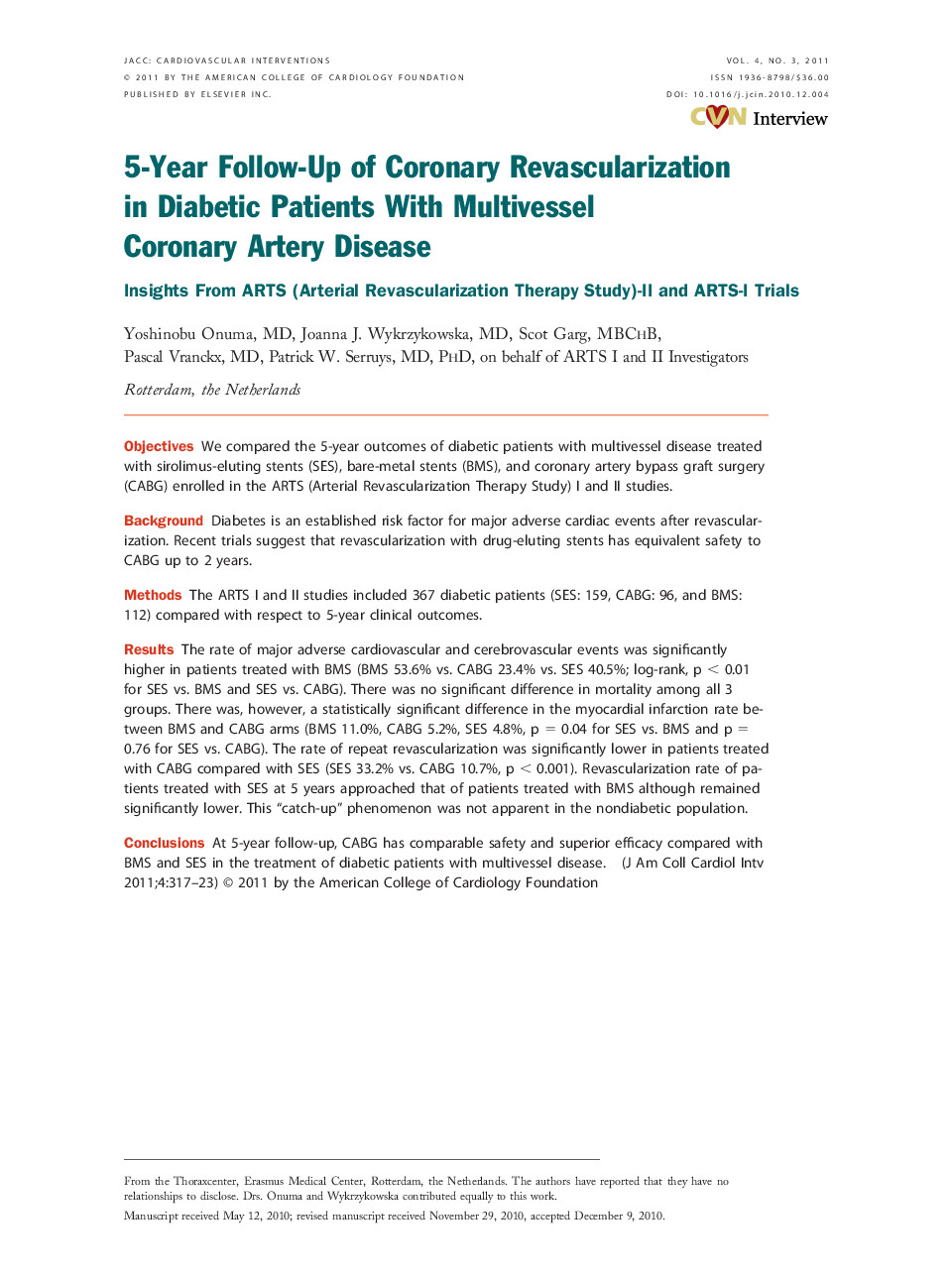| Article ID | Journal | Published Year | Pages | File Type |
|---|---|---|---|---|
| 2940879 | JACC: Cardiovascular Interventions | 2011 | 7 Pages |
ObjectivesWe compared the 5-year outcomes of diabetic patients with multivessel disease treated with sirolimus-eluting stents (SES), bare-metal stents (BMS), and coronary artery bypass graft surgery (CABG) enrolled in the ARTS (Arterial Revascularization Therapy Study) I and II studies.BackgroundDiabetes is an established risk factor for major adverse cardiac events after revascularization. Recent trials suggest that revascularization with drug-eluting stents has equivalent safety to CABG up to 2 years.MethodsThe ARTS I and II studies included 367 diabetic patients (SES: 159, CABG: 96, and BMS: 112) compared with respect to 5-year clinical outcomes.ResultsThe rate of major adverse cardiovascular and cerebrovascular events was significantly higher in patients treated with BMS (BMS 53.6% vs. CABG 23.4% vs. SES 40.5%; log-rank, p < 0.01 for SES vs. BMS and SES vs. CABG). There was no significant difference in mortality among all 3 groups. There was, however, a statistically significant difference in the myocardial infarction rate between BMS and CABG arms (BMS 11.0%, CABG 5.2%, SES 4.8%, p = 0.04 for SES vs. BMS and p = 0.76 for SES vs. CABG). The rate of repeat revascularization was significantly lower in patients treated with CABG compared with SES (SES 33.2% vs. CABG 10.7%, p < 0.001). Revascularization rate of patients treated with SES at 5 years approached that of patients treated with BMS although remained significantly lower. This “catch-up” phenomenon was not apparent in the nondiabetic population.ConclusionsAt 5-year follow-up, CABG has comparable safety and superior efficacy compared with BMS and SES in the treatment of diabetic patients with multivessel disease.
